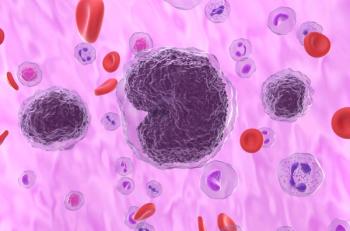
Case Study: Modified Potts Shunt Yields Exercise Benefit in Patient With PAH
A patient with pulmonary arterial hypertension (PAH) who received a modified Potts shunt exhibited improved quality of life and exercise capacity after 1 year.
A case report published in
A 22-year-old woman diagnosed with idiopathic PAH with suprasystemic pulmonary pressures 18 months prior to surgery underwent placement of a central unidirectional (valved) Potts shunt for her condition. Researchers found that after 1 year of follow-up, “the patient demonstrated overall clinical improvement with a significant increase in exercise tolerance.”
The individual received medical therapy of macitentan, sildenafil, and intravenous epoprostenol for 6 months, but her PAH remained in World Health Organization (WHO) functional class III with a 6-minute walking distance (6MWD) of 459 m (59% of expected).
Given her lack of improvement, the patient underwent screening for lung transplantation, but 1 month prior to surgery the patient was admitted to the hospital with hemoptysis and desaturations due to a viral respiratory tract infection, authors explained.
Following recovery, numerous treatment options were discussed including transplantation. Due in part to a lack of donor lungs, other options were considered, and the patient’s anatomy was found suitable for a Potts shunt.
“A central valved conduit was preferred because it protects the pulmonary circulation from pressure overload and reverse shunting, is easier to manage surgically in the event of a lung transplantation, and avoids potential bleeding from intercostal aortopulmonary collaterals, and because of prior surgical experience,” researchers wrote.
Immediately following her operation, the patient experienced desaturations, pulmonary edema, and a respiratory tract infection, requiring antibiotics, diuretics, and enovenous extracorporeal membrane oxygenation (ECMO) support. She was also put on a ventilator for 15 days.
From the eighth postoperative day, intravenous epoprostenol was tapered and substituted with oral selexipag taken twice daily for 1 month.
After 1 year, the patient’s 6MWD increased to 580 m (75%) and her PAH was classified as WHO functional class II. The patient was also able to resume work, climb a flight of stairs, and swim.
Cardiac MRIs taken prior to and following surgery revealed:
- The right ventricular end-diastolic volume (EDV) was unchanged (138 compared with 137 mL).
- End-systolic volume (ESV) decreased from 86 to 68 mL, and ejection fraction improved from 38% to 50%.
- The left ventricle EDV rose from 92 to a mildly dilated 121 mL, while the ESV rose from 31 to 51 mL.
- The left ventricular ejection fraction decreased mildly from 66% to 58%.
“The improvement of exercise tolerance attests to the fact that a modified unidirectional Potts shunt may provide palliation of symptoms in adult patients with PAH,” authors wrote. Despite tapered medication, the patient remains in WHO functional class II.
Additional follow-up should be conducted to better understand whether left ventricular remodeling improves or not following a shunt implantation.
“Another observation particular to this patient was the presence of aortopulmonary collateral vessels,” researchers added, noting these can occur in 15% to 30% of patients with idiopathic pulmonary hypertension and constitute the primary reason for hemoptysis requiring embolization. How the presence of the Potts shunt physiology interacts with collaterals remains unknown.
“Given the inevitable diversion of pulmonary blood flow, the presence of large systemic collaterals may be a risk factor for postoperative pulmonary oedema as seen in this patient,” authors said.
Overall, these promising results ought to be confirmed in more adult patients with PAH, although “the first experience may help to pave the way for a broader use of these shunts in this specific population of patients,” they concluded.
Reference
Symersky P, Jansen SMA, Kamminga SK, et al. Improvement in exercise capacity after a modified Potts shunt in an adult patient with pulmonary arterial hypertension. ERJ Open Res. Published online October 4, 2021. doi:10.1183/23120541.00287-2021
Newsletter
Stay ahead of policy, cost, and value—subscribe to AJMC for expert insights at the intersection of clinical care and health economics.













































